Published on September 1, 2012
By Thomas Van Hare
On this date in aviation history, September 1, 1983, a Korean Airlines Boeing 747-230B was shot down over the Sea of Japan. by the Soviet Union. The death toll was 269 people killed, all innocent victims of the Cold War. The flight, known as KAL 007, had committed the ultimate sin — it had flown off course while on the Alaskan trans-Pacific route to Seoul, South Korea. Unknowingly, it had flown across the Kamchatka Peninsula and then over the heavily militarized Sakhalin Island. For the Soviets, the timing of the flight’s pass meant only one thing — this couldn’t be an airliner. It had to be the USAF’s regular RC-135 reconnaissance flight, an electronics intelligence mission that routinely flew in international airspace collecting military signals data. When the Soviets thought the plane had strayed over their territory, they reacted in the harshest manner possible.
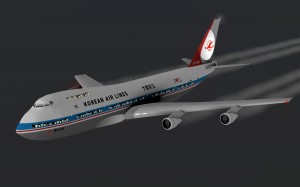
The Soviet Union intercepted the aircraft with a combination of Sukhoi Su-15TM “Flagon” and MiG-23 fighter aircraft. The transcript of communications reveals an unprofessional, almost panicked interception as orders spew out, laced with swearing, and confusing moments. The vaunted Soviet Air Force, as it turned out, was anything but expert.
“Gerasimenko, cut the horseplay at the command post, what is that noise there? I repeat the combat task: fire missiles, fire on target 60-65.”
“Wilco”
“Comply and get Tarasov here. Take control of the MiG-23 from Smirnykh, call sign 163, call sign 163, he is behind the target at the moment. Destroy the target!”
“Task received. Destroy target 60-65 with missile fire, accept control of fighter from Smirnykh.”
“Carry out the task, destroy!”
“Oh, sh*t, how long does it take him to get into attack position, he is already getting out into neutral waters? Engage afterburner immediately. Bring in the MiG 23 as well… While you are wasting time it will fly right out.”
“805, try to destroy the target with cannons.”
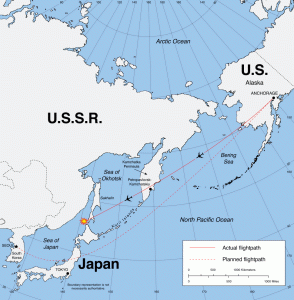
Meanwhile, the Korean Air Lines flight was climbing to a higher altitude in the usual stair stepping to upward that takes place during almost all commercial flights. As the Soviet fighters roared in, the plane was climbing from FL 330 to FL 350 (35,000 feet). Unaware of the large deviation from their intended course, the pilots were chatting amiably, discussing routes and who had drawn the longer over water flights.
The Soviet fighters closed in. Suddenly, the Soviet communications got deadly serious.
“I am dropping back. Now I will try a rocket.”
“Roger.”
“Twelve kilometers to the target. I see both.” (This was the trailing MiG-23 reporting that he saw both the airliner and the other Soviet interceptor.)
“805, approach target and destroy target.”
“Roger, I am in lock-on.”
“805, are you closing on the target?”
“I am closing on the target, am in lock-on. Distance to target is 8 kilometers.”
“Afterburner. AFTERBURNER, 805!”
“I have already switched it on.”
“Launch!”
“Z.G.” (the fighter plane reports on a low fuel warning light; flying in afterburner uses up fuel very quickly.)
“I have executed the launch.”
“Well, what do you hear there?”
“He has launched.”
“I did not understand.”
“He has launched.”
“He has launched, follow the target, follow the target, withdraw yours from the attack and bring the MiG-23 in there.”
“The target is destroyed.”
“Break off attack to the right, heading 360.”
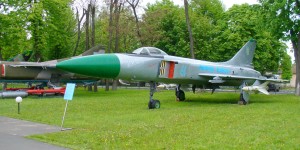
KAL 007 had been hit, but was not yet destroyed. The missile exploded behind the tail, damaging the aircraft’s tail and controls. Shrapnel from the missile punctured the aircraft skin, causing rapid decompression of the cabin. Some of the passengers were injured in the initial missile strike. The airliner’s CVR (Cockpit Voice Recorder) carried the sound of the explosion as the missile exploded nearby based its proximity fuse. Far from being destroyed, the plane flew on as the two pilots struggled to understand what had happened. The engines had continued to run properly, but the aircraft had sustained serious damage. It was crippled and beyond saving. The plane entered a long turn and slowly descended. Twelve minutes later it disappeared from Soviet and Japanese air defense radars as it passed below 300 meters at Moneron Island. It crashed shortly thereafter with a loss of all aboard.
The closest thing to an eyewitness account of the final crash of the plane came from a Japanese fisherman on board the 58th Chidori Maru. As quoted in the 1993 ICAO report regarding the shoot down, the fisherman heard the plane even if he could not see it. He reported that suddenly he had heard “a loud sound followed by a bright flash of light on the horizon, then another dull sound and a less intense flash of light on the horizon.” Another later report notes that thereafter he said he could smell aviation fuel in the air.

Analyzing the Attack and its Aftermath
The Soviet Union had launched Su-15TM interceptors and a MiG-23. The aircraft had closed only to a distance near enough to identify that the Korean Air Lines aircraft was a four-engine jet — coincidentally, so was the RC-135. For the Soviets, strangely, this was enough to confirm the aircraft’s identity. Had they flown closer, they would have made out the tail logo, which was illuminated by a bright, upward shining tail light. Why this wasn’t done remains a mystery, as the pilots had even discussed that they could not be sure it wasn’t a civilian plane. Nonetheless, when the order came to fire, they proceeded without hesitation. The Soviet method was to follow directions from the ground controllers at all times — to the letter.
In the wake of the attack, the Soviets refused to provide accurate coordinates for the search and rescue operation that followed. In fact, they provided incorrect coordinates and even launched a recovery effort at the wrong site to deceive the West. Meanwhile, they recovered parts of the aircraft and, on review, realized that they had downed a civilian airliner by mistake.
Those who had the full details of the shoot down within the USSR were horrified. Still others felt that the attack was a justified act against an intruder. The Soviets would even recover and review the contents of the CVR. Based on the data they recovered, they confirmed their worst fears. Afterward, they did what the Soviets did best — they hid the information, completely and absolutely.
History isn’t written by the victors, but by the spies.
It wasn’t until eight years after the fall of the Soviet Union that the contents of the CVR and other Soviet findings were finally revealed to the West. As part of the facade they erected, the Soviets awarded the pilots involved medal citations as thanks for their service.
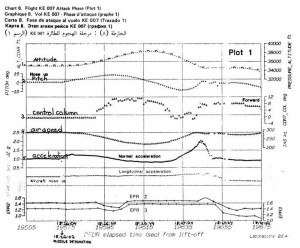
Aftermath and Final Words
The shoot down of KAL 007 had taken place amidst the background of increasing tension between the USA and the Soviet Union. The Soviets had been on a hair-trigger based on the Reagan Administration’s perceived strong military policy. Moreover, Soviet military adventures, such as in Afghanistan, were not working out favorably. The Reagan Administration was creating a stronger, more united NATO on the Soviet’s European border. Both sides were engaged in a missile build up. Both sides were accusing the other of being warmongers.
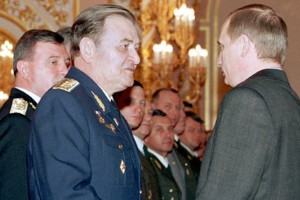
The intrusion of what the Soviets thought was a spy plane was viewed in a strictly military light. The military leadership saw the flight as a possible precursor to war. Even so, the Soviets’ actions were unforgivable. They should have closed in and identified the airplane. They should have fired warning shots. They should have done a whole host of things, but they did not. In typical Soviet fashion, those responsible were protected. To this day, nobody has ever been so much as put on probation for their role in the shoot down.
One More Bit of Aviation History
In the wake of the shootdown of KAL 007, President Ronald Reagan would approve the use of the US Military’s Global Positioning System (GPS) by civilian aircraft and others. It was hoped that this would reduce or even eliminate the potential for accidental navigational errors, including ones into restricted airspace. Since that time, the uses of GPS have multiplied — today, virtually every smart phone and camera uses GPS signals, allowing citizens to navigate their way around cities, on the roads and while in the wilderness. No doubt, countless lives have been saved as a result.
Today’s Aviation History Trivia Question
The USSR had a long tradition of intercepting and shooting down intelligence aircraft that had crossed their border on spy missions. What was the first such shoot down in the Cold War period?

The first “shootdown” of an American aircraft was the downing of a US Navy PB4Y over
the Baltic Sea in September 1949 by YAK fighter aircraft. The entire crew of the Navy plane
perished in this incident.
I will look forward to reading the story of KAL Flight 902 on April 20, another South Korean airliner badly damaged by Russian Su-15s in 1978, but the pilot managed to miraculously land it on a frozen lake….
In my opinion, the Soviets downing a civil plane like KAL 007 with 269 people aboard was criminal; I think they were trying to hide ICBM secret test.